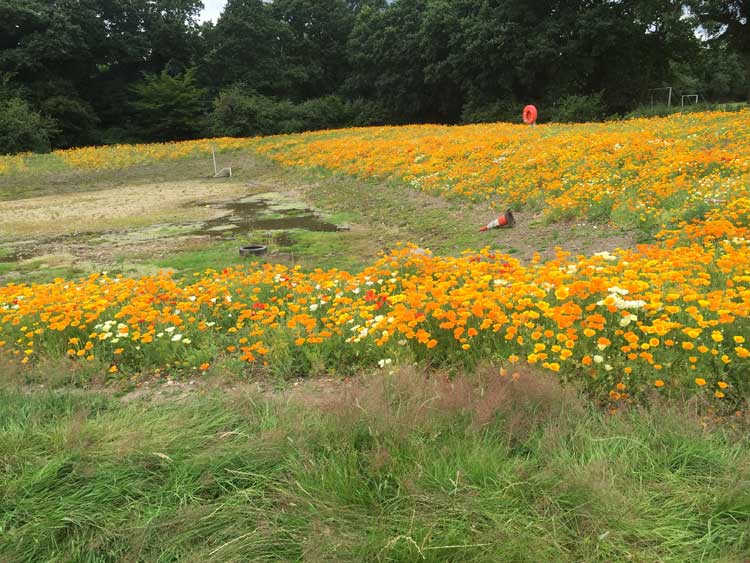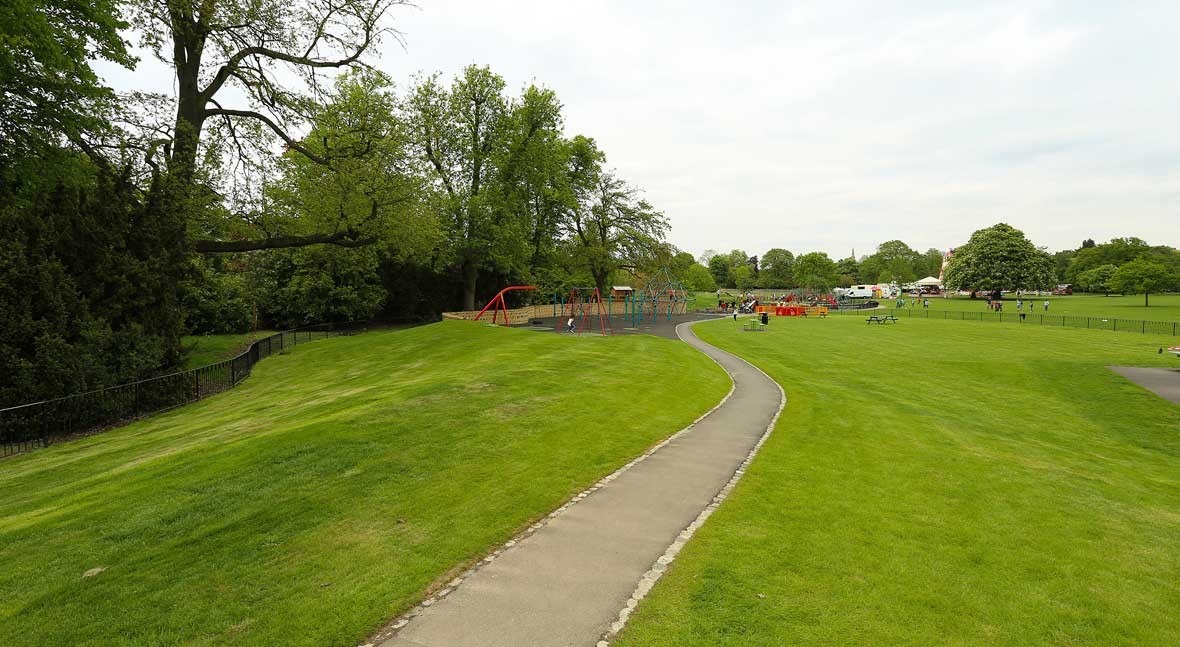The Herne Hill and Dulwich Flood Alleviation Scheme is a green infrastructure project in the London borough of Southwark (UK) that provides a strong example of an approach to reduce flooding risk in urban areas. This award-winning scheme involved a public-private partnership between Southwark Council and Thames Water, with support from the UK Environment Agency. The SUDS project, which has received the ICE Engineering Award 2015, the EA Project Excellency Award 2015 (for partnership) and the British Construction Industry Awards 2015 (Sustainability), has been praised for the extensive stakeholder involvement with local interest groups, businesses and residents. The outreach efforts were central to gaining support for the scheme and ensuring the continued delivery of amenity and environmental benefits.
The primary objective of Southwark Council and key partners: the Environment Agency and Thames Water, was to implement a sustainable scheme that delivers multiple benefits to the community, residents, businesses and other key stakeholders. These were surface water flooding alleviation, sewer flooding alleviation, improved amenity, environmental and biodiversity enhancement, reduced treated water usage in the park, together with low maintenance.
The scheme involved building earth bunds to intercept and temporarily hold up to 51,000 m³ of water in 3 parks during severe storm events
The scheme sought to alleviate flooding in the Herne Hill and Dulwich by maximising surface water storage in the open spaces; Dulwich Park, Belair Park and the Southwark Community Sports Trust grounds (SCST) for an event likely to occur once in 75 years. The scheme involved building earth bunds to intercept and temporarily hold up to 51,000 m³ of water in the three parks during severe storm events. Stored water will be released into the sewer network when the peak of the storm is over. Three underground geocellular tanks connected to the sewer network provides water storage for day to day conditions. Filter drains at the toe of the bunds direct storm water to the storage tanks helping to improve day to day drainage within the parks. This integrated approach prevents surface water from the three parks draining into and overwhelming the sewer network and causing surface and sewer flooding of properties as experienced in the past.

Wildflower meadow in detention basin in Belair Park. Image: Southwark Council.
The scheme protects over 200 homes and businesses from surface water flooding and further reduces flooding to more than 440 properties in the wider area. Additionally, more than 100 properties are protected from sewer flooding with a likelihood of occurring once every 30 years.
Since the scheme was implemented in November 2014, it has been tested a couple of times. Particularly, on 23 June 2016, there was a significant storm event that triggered more than 41 calls across the borough to the Fire Brigade for assistance over sewer and surface water flooding incidents but none in the Dulwich and Herne Hill area. Following reports of widespread flooding across the borough, one of the residents’ associations in the area sent an email to find out whether the Flood Scheme was responsible for their protection from flooding or it was just their luck. It was however clear that the scheme had worked as designed.
This approach prevents surface water from overwhelming the sewer network and causing sewer flooding of properties as in the past
By all standards, it was the area that should have experienced flooding being the lowest point of the borough and most at risk of flooding. On that occasion, there was a number of manholes in the parks surcharging and significant ponding in Dulwich Park which was what the scheme was designed to do. More recently, during the 2020 winter season, there was significant ponding in the parks as surface water was held from exiting the park and running into the sewers which could surcharge and cause sewer flooding.
The Scheme was designed to be sympathetic to the character of the parks; it was designed with the view that when one visits the park after the scheme was implemented it will not be obvious that a flood alleviation scheme had been built there. The earth bunds were built into the landscaping of the park and play facilities such as tunnels, slides and climbing walls were incorporated to create the impression of a well-designed playground. The scheme introduced more play equipment and enhanced amenity for children to enjoy. More visitors have been attracted to the playground and the facilities are fully utilised.

A look into the geocellular tank 5 years into installation. Image: Southwark Council.
The delivery team took advantage of the scheme to implement general environmental improvement measures including planting wildflower meadows. General drainage improvement incorporated in the scheme has enhanced the quality of grass growth and made the football pitches more playable during the winter season. This is in sharp contrast to what persisted before the scheme where football and cricket matches were often cancelled due to unplayable water-logged pitches. The scheme, therefore, improves the physical and mental wellbeing of the park users and the community at large.
It was designed with the view that when one visits the park it will not be obvious that a flood alleviation scheme had been built there
Since the scheme was implemented there has been no need to top up the lake in Dulwich Park with treated water as surface water from the park is diverted to the lake. That used to be done in the past although very infrequently.
The project was planned to be low maintenance with the pipe network designed to be self cleansing. General maintenance activities were incorporated into the routine maintenance activities of the parks. In July 2020, a comprehensive 5-year review of the scheme was undertaken and that confirmed that very little maintenance was required as seen in pictures of the underground tanks. The Southwark Council is confident that the project outcomes have reflected the objectives set out at the onset and meets the aspirations of the community.



